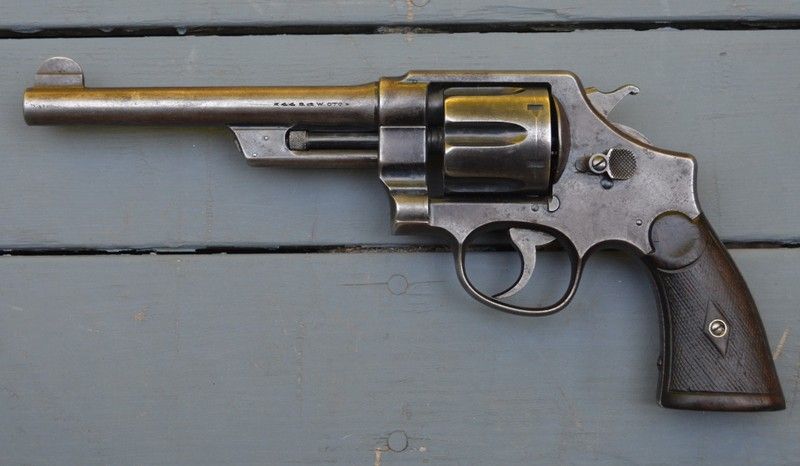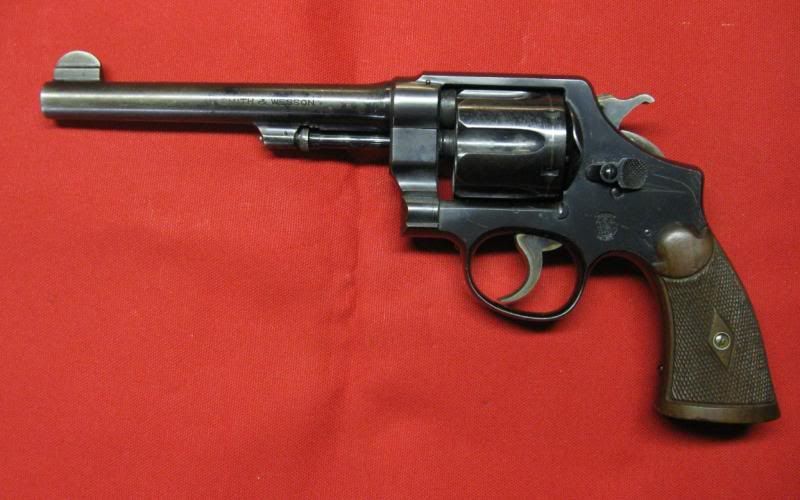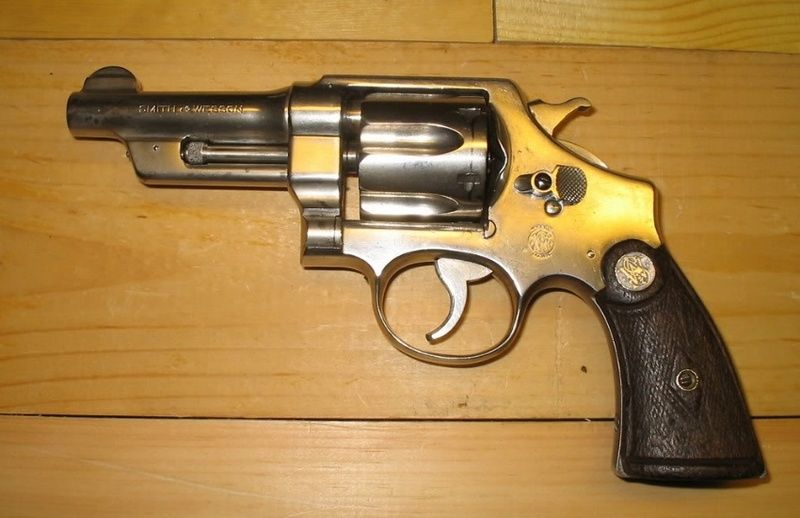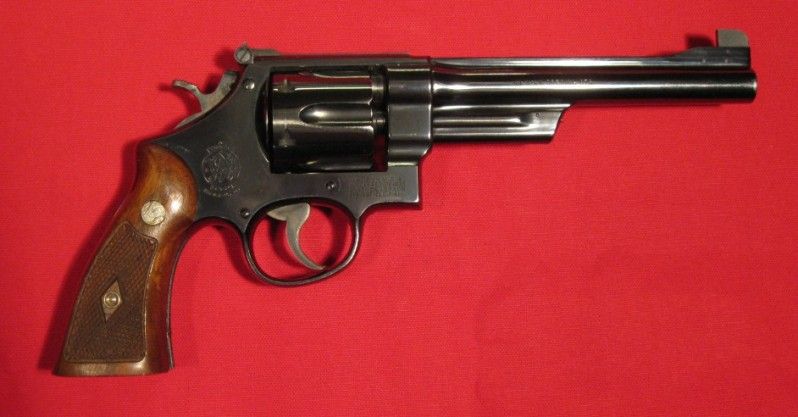Mike Irwin
Staff
The Russian probably penetrated more wood boards in those tests due solely to bullet profile. The flat point bullet that was pretty much universal on .44-40 bullets that time likely would not have penetrated as well.
Edited to add.... the .44-40 bullet was also lighter, which also likely cut back on the overall penetration numbers.
"S&W did not design their top breaks to take the longer 45 LC cartridge, and don't even mention it in their advertising. They did claim their pistol and round were designed for target shooting and hunting, which is not a lot of information about ballistics other than diameter."
Uhm... We're not talking about break tops, at least not in terms of the .44 Special. We're talking about the N-frame Hand Ejector, which was the New Century model in S&W advertising and was introduce in 1907-1908.
As for the break tops, no, the Model 3 was never chambered for the .45 Colt -- that cartridge was too long. That's the entire reason why the .45 S&W came into existence. It was short enough to fit in the Model 3's frame.
After testing the US military adopt the S&W loading, dropping production of the .45 Colt cartridge, and loaded the S&W version until the end of .45 revolver production.
As for the origin of the .44 Russian, it came about due to another case of Russian collusion... When approached by Russia, S&W originally offered handguns chambered for the .44 American round, which used the old style heeled bullet. The Russians requested a single-diameter bullet, and thus the .44 Russian was born.
The .44 Russian cartridge predates the .45 Long Colt by 3 years in design, and was first offered commercially for sale in the US around 1871.
At that time Colt was selling opentop revolvers chambered in .44 Colt while working on what would become the Model 1873 for the US military.
In reality, if anything, Colt was bringing out its revolvers/cartridges in response to the headstart and advantage the S&W had from the patent on the bored through cylinder, which lasted until... 1867?
S&W's entry into the US military competition was, if anything, an afterthought because they were at full production making handguns for the US civilian market and for the Russian military.
In fact, in the late 1870s the US military came back to S&W with another request for Schofield models. S&W was still selling guns to the Russians, who were paying in gold.
The US was offering, for 8,000 revolvers, payment in US currency at some point in the future, AFTER delivery of all 8,000 guns, and when the government got around to it.
Suitably impressed with the War Department's terms, S&W told them to sod off.
Edited to add.... the .44-40 bullet was also lighter, which also likely cut back on the overall penetration numbers.
"S&W did not design their top breaks to take the longer 45 LC cartridge, and don't even mention it in their advertising. They did claim their pistol and round were designed for target shooting and hunting, which is not a lot of information about ballistics other than diameter."
Uhm... We're not talking about break tops, at least not in terms of the .44 Special. We're talking about the N-frame Hand Ejector, which was the New Century model in S&W advertising and was introduce in 1907-1908.
As for the break tops, no, the Model 3 was never chambered for the .45 Colt -- that cartridge was too long. That's the entire reason why the .45 S&W came into existence. It was short enough to fit in the Model 3's frame.
After testing the US military adopt the S&W loading, dropping production of the .45 Colt cartridge, and loaded the S&W version until the end of .45 revolver production.
As for the origin of the .44 Russian, it came about due to another case of Russian collusion... When approached by Russia, S&W originally offered handguns chambered for the .44 American round, which used the old style heeled bullet. The Russians requested a single-diameter bullet, and thus the .44 Russian was born.
The .44 Russian cartridge predates the .45 Long Colt by 3 years in design, and was first offered commercially for sale in the US around 1871.
At that time Colt was selling opentop revolvers chambered in .44 Colt while working on what would become the Model 1873 for the US military.
In reality, if anything, Colt was bringing out its revolvers/cartridges in response to the headstart and advantage the S&W had from the patent on the bored through cylinder, which lasted until... 1867?
S&W's entry into the US military competition was, if anything, an afterthought because they were at full production making handguns for the US civilian market and for the Russian military.
In fact, in the late 1870s the US military came back to S&W with another request for Schofield models. S&W was still selling guns to the Russians, who were paying in gold.
The US was offering, for 8,000 revolvers, payment in US currency at some point in the future, AFTER delivery of all 8,000 guns, and when the government got around to it.
Suitably impressed with the War Department's terms, S&W told them to sod off.








